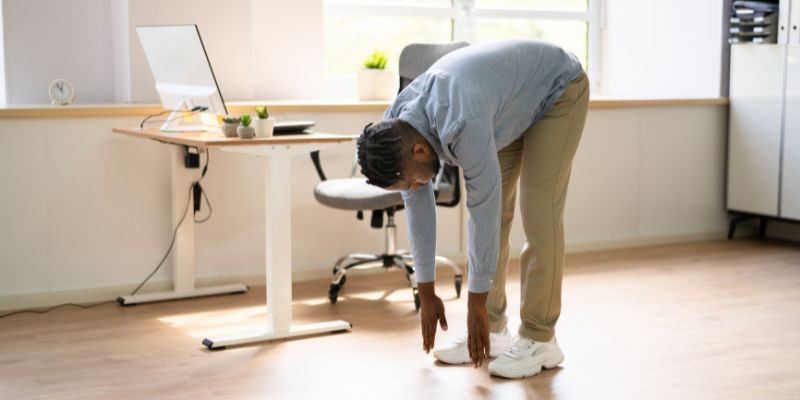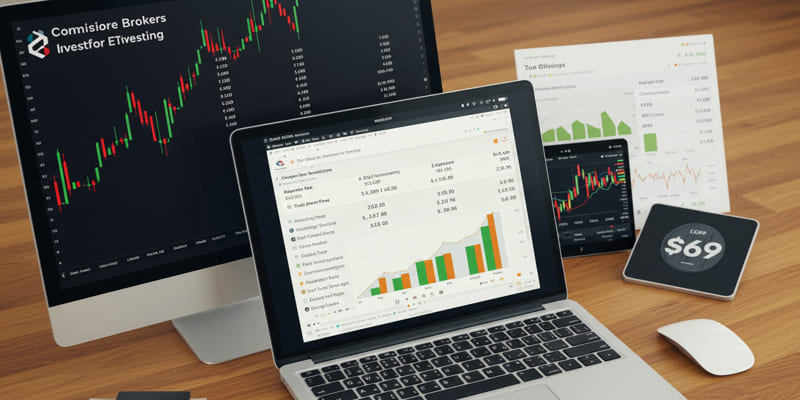Advertisement
All day at work could cause stiffness, tiredness, and even pain. Long hours in the same posture can strain your body regardless of your workspacedesk or front of a computer. Inactivity in your back, neck, shoulders, and hips can cause discomfort and poor posture. However, there's a simple technique to offset these consequences: stretching!
Stretching for a few minutes during your working day can greatly affect your mood. It increases your vitality, lowers muscle tension, and aids circulation. Best of all, you don't need much room or particular tools. Do these easy stretches right at your desk or workstation. Are you all set to relax and experience greater comfort? Let's investigate the ideal stretches for all-day sitting at the office!

Try some basic but powerful stretches below to help offset the consequences of spending all day at work seated.
Long hours of sitting often cause neck stiffness; a basic neck stretch can help release tight muscles and correct posture. Lean slightly to one side, then straight forward in your chair, pointing your ear toward your shoulder. Throughout the stretch, make sure you move carefully and maintain relaxed shoulders. Hold for twenty seconds, then turn sides. Perform this three times on both sides. This stretch releases neck stress and lessens discomfort resulting from extended screen usage.
Sitting and typing all day might make your shoulders stiff and hunched. Either sit or stand straight back to relax shoulder tension. One arm should be raised across your chest, then softly pulled toward your body with the other hand. Take great care to maintain your shoulders free all during the stretch. Spend twenty seconds in this posture; then, change sides and repeat three times.
Sitting forward often makes your chest tense, affecting your breathing and worsening poor posture. Better breathing and posture might result from a chest opener helping stretch and open your chest. Straightening your arms, stand tall, and clasp your hands behind your back. Lift your chest gently, then draw your shoulders back. Spend twenty seconds holding them three times.
A seated spinal twist can help alleviate tension in your lower back from extended sitting all day and lengthen your spine. From your chair, have your feet level on the floor. Lean your torso gently to the right using your right hand on the chair's rear. As you twist, keep your shoulders relaxed and your back straight. Hold for twenty seconds, flip sides, then repeat three times on each side.
Extended sitting could cause your hip flexors to get tight and unpleasant. A hip flexor stretch will help you be more flexible and ease this pain. Lower your back knee to the floor while in a lunge stance, one-foot front and the other back. Forward pressing your hips will cause the front of your hip to extend. Hold for twenty seconds, then switch legs alternately thrice on each side.
Your hamstrings often stiffen during prolonged sitting at the rear of your thighs. Stretching your hamstrings will assist these muscles extend and relax, enhancing flexibility. Sitting on the edge of the chair, extend one leg straight ahead. Feeling the stretch at the rear of your thigh, flex your foot and reach forward to touch your toes. Hold for twenty seconds, then switch legs alternately thrice on each side.

Although sitting all day could cause lower back pain and tight hips, a seated figure-four stretch successfully addresses both regions. Sit on your chair, then form a "figure four" with your legs by laying your right ankle on your left thigh. Maintaining your back straight, softly press down on your right knee. Hold for twenty seconds; flip sides and repeat thrice on each side. This stretch increases mobility, helps to relax tight hips, and lessens lower back discomfort.
Long stretches of sitting may cause your calves to become tight and rigid, restricting circulation and creating leg pain. A calf stretch can assist in preventing this tightness and boost circulation. One foot forward of the other, stand facing a wall. To feel the stretch in your calf, press your hands against the wall, straight back leg, and slant toward the wall. Hold for twenty seconds, then switch legs alternately thrice on each side. This stretch increases good leg blood flow and helps loosen calf tightness.
Forearms and wrists may become strained from all-day keyboard typing. This stretch, effective in releasing pain and stiffness, will help you feel more at ease while working. Extending one arm right in front of you with the palm facing upward, stretch the wrist and forearm. Pull your fingers softly back toward your body with your other hand. Spend twenty seconds in this stance, and then change your arms.
The seated cat-cow stretch is a great way to alleviate tension in your back and expand your spine. Those who spend much time seated at a desk find this stretch helpful. Practice this stretch in your chair with your feet flat on the floor and your hands resting on your knees. Arch your back, raise your chest, and look upward to enter the cow posedeep inhale. Then, as you curve your back, tuck your chin to your chest for the cat stance.
You must include stretches in your daily schedule if you spend long hours sitting. These easy motions can help your hips, back, shoulders, and neck become more flexible, relieving tension. Additionally, increasing your vitality and helping to avoid long-term health issues brought on by inactivity is stretching. The best thing is that you need a few minutes of stretching at your desk to make a significant differenceyou don't need any particular tools or lots of time. Including these stretches in your daily schedule can help you to feel more at ease, rested, and creative.
Advertisement

By Aldrich Acheson/Dec 11, 2024

By Tessa Rodriguez/Jan 09, 2025

By Georgia Vincent/Jan 13, 2025

By Maurice Oliver/Oct 18, 2024

By Georgia Vincent/Dec 27, 2024

By Mason Garvey/Jan 07, 2025

By Noa Ensign/Apr 01, 2025

By Nancy Miller/Jan 15, 2025

By Pamela Andrew/Oct 29, 2024

By Darnell Malan/Apr 02, 2025

By Georgia Vincent/Dec 15, 2024

By Verna Wesley/Dec 21, 2024